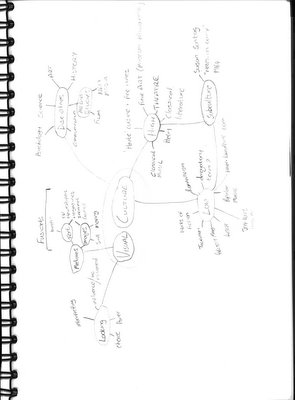"To see is a process of observing and recognizing the world around us. To look is to actively make meaning of that world."
Seeing is an ability that most of us are born with, we are able to observe the world, however, by looking it takes us as humans many years to make even the vaguest sense of it. Looking is an experiential cognition, and must be practiced as it involves the interpretation of the things that you see. These interpretations can cause a myriad of emotional reactions and responses as diverse as pleasure, curiosity, confusion or disgust.
Looking, or rather the choice to look, brings about relationships of power. To look at an image is a voluntary, however you can be persuaded to look, and in doing so you are relinquishing to the power of the image that you look at. You might try to get others not to look at you by the way you act or dress, or by the same methods you may want to stand out and be looked at. Both of these are exercises of power, and such power can also be exercised by images created by others.
The interpretation of seeing something is fairly unique to the individual, although a defined collective emotional response can be brought about using imagery. A single image may take on many different meanings to different people.
In the image saturated world that we live in, the realms of 'old' and 'new' media rely on each other for the meanings to their images. For example, many of the most popular traditional paintings have been technologically reproduced, thus making the image itself a print of another images. Does the image therefore lose its original meaning?
We use both language and images to refer to the world around us, this is known as representation. Languages are sounds (or words) based upon a set of rules governing how they should be understood, which allows us to quantify, express and interpret meaning. Similar rules apply to images, which have conventions about how they are organised and expressed. It should be considered that we as humans can only make meaning of the world through representation, which humans themselves create, impact upon and interpret. Therefore we ourselves are continually constructing meaning of the material world, unlike some who may argue that we are merely mirroring the world as it is though the forms of representation. However, sometimes the distinction between these two views can be difficult to make. Although it can be easy to argue that a still life painting or a portrait is mimicking real world objects it is easy to miss the hidden connotations that an image may have, which the creator wished to express in this fashion. Thus we are making complex meaning from images as simple as a vase of flowers or food at a table. Such complexities are illustrated in Magritte's
Ceci n'est pas une pipe 1928-29
Photography
photography was developed in Europe in the early 19th century, where the concepts of
positivist science were prevalent. Positivism declared that human subjectivity could taint any process, be it a scientific experiment or capturing an image. Hence the photograph, being 'recorded' by a mechanical device, was seen to be free of subjectivity. A method of 'registering reality' through scientific methods, which was thought to be rather more accurate than a drawing.
However, it could be argued that the operator of any camera is a 'subjective' human being, and although the image might be a recording of an exact place and time, it is still subject to the wishes of the person capturing the image. Also, the image itself is always open to interpretation by the people who view it, similarly to artwork. Although the medium of communication is different, the meanings interpreted by looking at an image may be the same.
The argument over the validity of photographs to accurately interpret real world events has resurfaced with the advent of digital photography. A photographic image is often seen as an exact copy of a scene; but without other evidence to corroborate the photo it is easy to interpret. Yet an interpretation of events is given more truth value by a photograph, even if the interpretation is false. This is very much the case in courtrooms, where debates over the validity of photographic evidence are most prevalent.
Still, photographs are held in regard as truthful records of objects or events, and this is what gives them power. Even in the present climate, where most people know that photographs can be convincingly manipulated with the help of computer software.
The levels of meaning
Theorist
Roland Barthes wrote about images having two distinct levels of meaning. These were described as DENOTATIVE and CONNOTATIVE:
Denotive meanings are those apparent truths present in an image, providing documentary evidence and literal, descriptive meaning.
Connotative meanings are those which are formulated from the context of the image both culturally and historically, and the viewers knowledge of that culture of history. Basically, the way that the viewer feels both personally and socially.

